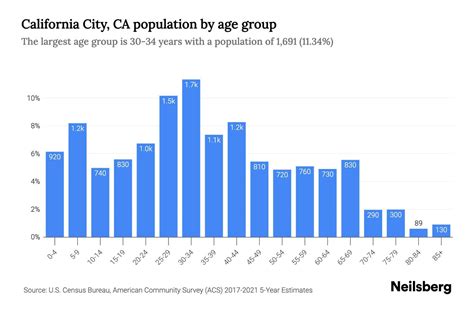California, the most populous state in the United States, has been experiencing steady growth over the years. As of the latest available estimates from 2023, California’s population stands at approximately 39.5 million people. This number represents a significant portion of the country’s total population, with California alone accounting for roughly 12% of the United States’ total population.
To put this into perspective, the state’s population has been steadily increasing over the past few decades, with an average annual growth rate of about 0.8%. However, it’s worth noting that the growth rate has slowed somewhat in recent years, primarily due to a combination of factors such as high cost of living, particularly in terms of housing, and changes in migration patterns.
Breaking down the population further, the majority of Californians reside in urban areas, with cities like Los Angeles, San Diego, and San Jose being among the most populous. The Los Angeles-Long Beach-Anaheim metropolitan area alone is home to over 13 million people, making it one of the largest metropolitan areas in the world.
In terms of demographic breakdown, California’s population is known for its diversity. As of the latest data, the state’s population is approximately 39.4% Hispanic or Latino, 31.9% White, 15.3% Asian, 6.5% Black or African American, and 1.6% American Indian or Alaska Native. This diversity is reflected in the state’s culture, economy, and politics, making California a unique and vibrant place.
For those interested in the historical context of California’s population growth, it’s fascinating to look at how the state has evolved over time. From its early days as a sparsely populated territory to its current status as a global hub for technology, entertainment, and innovation, California has always been a magnet for people from all over the world. The state’s attractive climate, economic opportunities, and progressive attitude have made it an appealing destination for migrants, contributing to its rapid growth.
Looking ahead, projections suggest that California’s population will continue to grow, albeit at a slower rate than in previous decades. Factors such as aging population, changes in birth rates, and migration patterns will play significant roles in shaping the state’s demographic future. By understanding these trends and statistics, policymakers, businesses, and individuals can better prepare for the challenges and opportunities that come with a growing and evolving population.
Demographic Breakdown of California:
- Total Population: Approximately 39.5 million
- Urban Population: The majority of Californians live in urban areas
- Ethnic Composition:
- Hispanic or Latino: 39.4%
- White: 31.9%
- Asian: 15.3%
- Black or African American: 6.5%
- American Indian or Alaska Native: 1.6%
Historical Population Growth:
- Average Annual Growth Rate: About 0.8%
- Population in 2020: Approximately 39.5 million
- Projected Growth: Slower growth expected in the coming years due to various factors
Key Statistics:
- Most Populous Cities: Los Angeles, San Diego, San Jose
- Largest Metropolitan Area: Los Angeles-Long Beach-Anaheim
- Population Percentage of the US: Roughly 12%
Understanding California’s population dynamics is crucial for addressing the state’s future challenges, from housing and healthcare to education and environmental sustainability. By examining the latest statistics and trends, California can continue to thrive as a leader in innovation, diversity, and opportunity.
What is the current population of California?
+As of the latest estimates from 2023, California's population is approximately 39.5 million people.
What is the ethnic composition of California's population?
+California's population is diverse, with approximately 39.4% identifying as Hispanic or Latino, 31.9% as White, 15.3% as Asian, 6.5% as Black or African American, and 1.6% as American Indian or Alaska Native.
What are the most populous cities in California?
+The most populous cities in California include Los Angeles, San Diego, and San Jose, with the Los Angeles-Long Beach-Anaheim metropolitan area being one of the largest in the world.
In conclusion, California’s population is a dynamic and evolving entity, influenced by a myriad of factors ranging from economic opportunities and demographic changes to environmental and policy considerations. As the state continues to grow and diversify, understanding its population trends and statistics will be instrumental in navigating the complexities of the future. Whether you’re a policymaker, entrepreneur, or simply a resident, grasping the nuances of California’s population is key to unlocking the state’s full potential and ensuring its continued prosperity.



